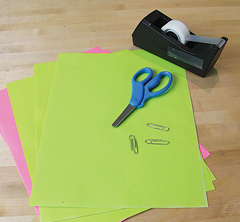Look at the trees and plants all around you – especially the ones you and your family didn’t plant. How do you think they got there? How did the flowers from your garden start growing in your neighbor’s yard, too? Just like people and animals, plants are designed to have offspring so their species
survive. For this to happen, seeds must be packaged by nature in a way that protects them and gets them to their next, best destination. This is called seed dispersal.
Have you ever wondered why seeds look so different or how nature has designed some seed casings so their seeds can travel? Mother nature has helped plants and trees figure out how to do this best. In the spring, we see dandelion seeds float through the air; in the fall, the acorn seed just plunks to the ground. Perhaps the best, naturally engineered seeds (in the Richmond area anyway) come from the maple tree. With their little propellers moving like the blades on a helicopter, these seeds fall and spin from a tree to create their own little tornado as they travel to fertile ground. How would you like to make your own helicopter seed model? Let’s do science:
 What you need:
What you need:
• Scissors
• 8½ x 11 paper (light cardstock is best)
• Tape
• Paper clips
 What you do:
What you do:
1.Lay down your paper so that the long side is at the top, and fold your paper in half, long ways.
2.Fold each half again, so you have four long sections.
3.Now cut along the folds, so you have four long strips of paper.
4.Fold one of your strips in half.
5.On one side, cut the strip down the middle to the fold line.
6.On each side of the fold line, cut ¼ of the way across to the middle of the separated strips.
7.Fold in the left side and then the right side, so they overlap a little.
8.Use three small pieces of tape to tape the flap down.
9.Then fold the separated strips down in opposite directions, so they look like an airplane propeller.
10.Lastly, attach a paperclip to the bottom of the taped down flap.
11.Repeat with your remaining three strips.
12.Hold your spinning seed replica up in the air, drop it, and watch it spin.
Challenge:
For an extra challenge try modifying each of your spinning seeds. You can change the different size paperclips you use, trim the length of the propeller, or make bigger and smaller spinning seeds and see what happens. Think again about the different seeds you’ve seen and why some travel farther than others. Can you design a seed case that would help a seed travel even further?






